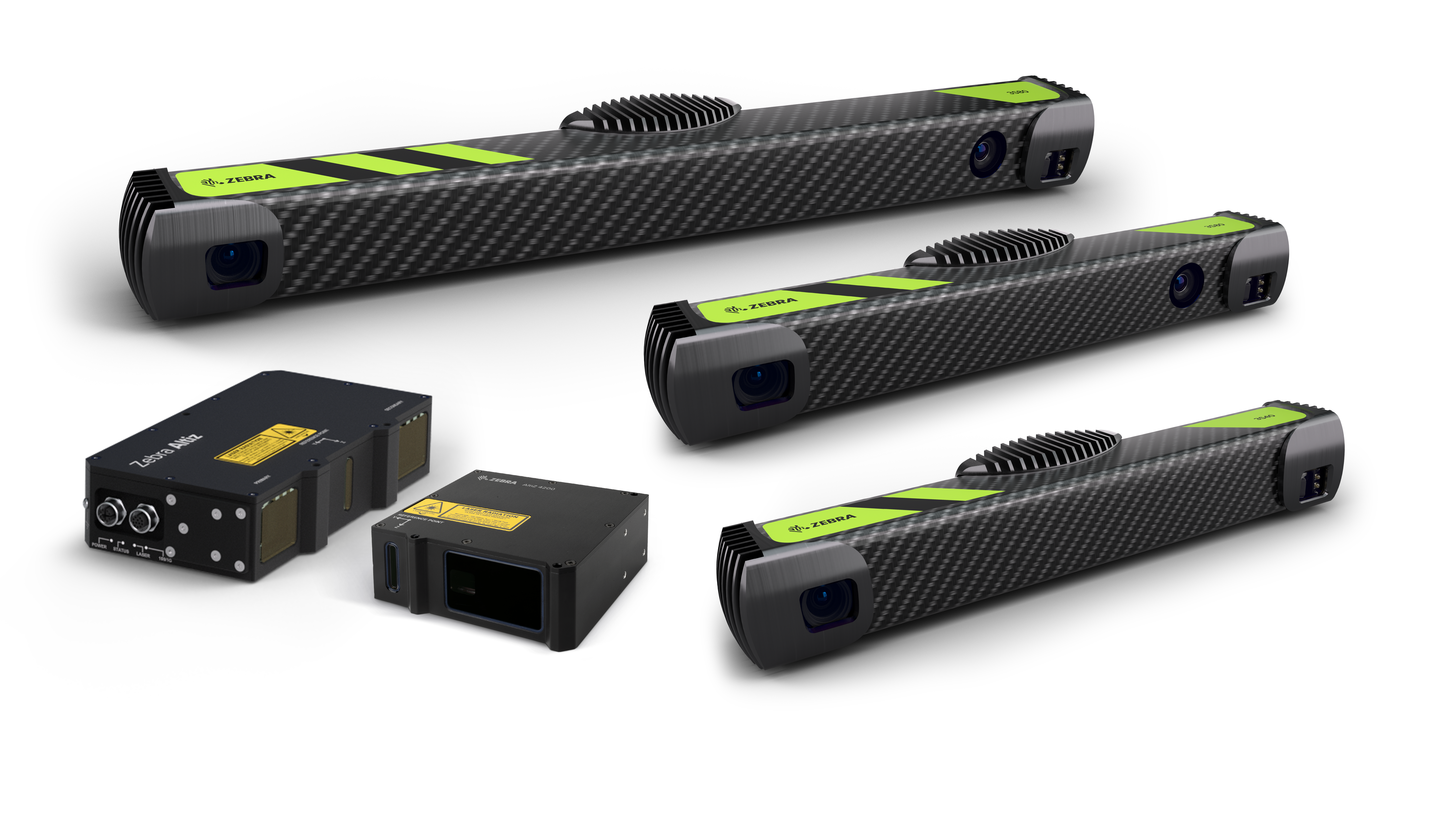Transform retail operations with Zebra’s retail technology solutions, featuring hardware and software for improving inventory management and empowering teams.
Streamline operations with Zebra’s healthcare technology solutions, featuring hardware and software to improve staff collaboration and optimise workflows.
Enhance processes with Zebra’s manufacturing technology solutions, featuring hardware and software for automation, data analysis, and factory connectivity.
Zebra’s transportation and logistics technology solutions feature hardware and software for enhancing route planning, visibility, and automating processes.
Zebra's hospitality technology solutions equip your hotel and restaurant staff to deliver superior customer and guest service through inventory tracking and more.
Zebra's market-leading solutions and products improve customer satisfaction with a lower cost per interaction by keeping service representatives connected with colleagues, customers, management and the tools they use to satisfy customers across the supply chain.
Empower your field workers with purpose-driven mobile technology solutions to help them capture and share critical data in any environment.
Zebra's range of mobile computers equip your workforce with the devices they need from handhelds and tablets to wearables and vehicle-mounted computers.
Zebra's desktop, mobile, industrial, and portable printers for barcode labels, receipts, RFID tags and cards give you smarter ways to track and manage assets.
Zebra's 1D and 2D corded and cordless barcode scanners anticipate any scanning challenge in a variety of environments, whether retail, healthcare, T&L or manufacturing.
Zebra's extensive range of RAIN RFID readers, antennas, and printers give you consistent and accurate tracking.
Choose Zebra's reliable barcode, RFID and card supplies carefully selected to ensure high performance, print quality, durability and readability.
Zebra's rugged tablets and 2-in-1 laptops are thin and lightweight, yet rugged to work wherever you do on familiar and easy-to-use Windows or Android OS.
With Zebra's family of fixed industrial scanners and machine vision technologies, you can tailor your solutions to your environment and applications.
Zebra’s line of kiosks can meet any self-service or digital signage need, from checking prices and stock on an in-aisle store kiosk to fully-featured kiosks that can be deployed on the wall, counter, desktop or floor in a retail store, hotel, airport check-in gate, physician’s office, local government office and more.
Discover Zebra’s range of accessories from chargers, communication cables to cases to help you customise your mobile device for optimal efficiency.
Zebra's environmental sensors monitor temperature-sensitive products, offering data insights on environmental conditions across industry applications.
Zebra's location technologies provide real-time tracking for your organisation to better manage and optimise your critical assets and create more efficient workflows.
Enhance frontline operations with Zebra’s AI software solutions, which optimize workflows, streamline processes, and simplify tasks for improved business outcomes.
Empower your frontline with Zebra Companion AI, offering instant, tailored insights and support to streamline operations and enhance productivity.
The everything you need to rapidly and cost effectively develop high-performance AI vision applications on Zebra mobile computers.
Zebra Workcloud, enterprise software solutions boost efficiency, cut costs, improve inventory management, simplify communication and optimize resources.
Keep labour costs low, your talent happy and your organisation compliant. Create an agile operation that can navigate unexpected schedule changes and customer demand to drive sales, satisfy customers and improve your bottom line.
Drive successful enterprise collaboration with prioritized task notifications and improved communication capabilities for easier team collaboration.
Get full visibility of your inventory and automatically pinpoint leaks across all channels.
Reduce uncertainty when you anticipate market volatility. Predict, plan and stay agile to align inventory with shifting demand.
Drive down costs while driving up employee, security, and network performance with software designed to enhance Zebra's wireless infrastructure and mobile solutions.
Explore Zebra’s printer software to integrate, manage and monitor printers easily, maximising IT resources and minimising down time.
Make the most of every stage of your scanning journey from deployment to optimisation. Zebra's barcode scanner software lets you keep devices current and adapt them to your business needs for a stronger ROI across the full lifecycle.
RFID development, demonstration and production software and utilities help you build and manage your RFID deployments more efficiently.
RFID development, demonstration and production software and utilities help you build and manage your RFID deployments more efficiently.
Zebra DNA is the industry’s broadest suite of enterprise software that delivers an ideal experience for all during the entire lifetime of every Zebra device.
Advance your digital transformation and execute your strategic plans with the help of the right location and tracking technology.
The Zebra Aurora suite of machine vision software enables users to solve their track-and-trace, vision inspection and industrial automation needs.
Zebra Aurora Focus brings a new level of simplicity to controlling enterprise-wide manufacturing and logistics automation solutions. With this powerful interface, it’s easy to set up, deploy and run Zebra’s Fixed Industrial Scanners and Machine Vision Smart Cameras, eliminating the need for different tools and reducing training and deployment time.
Aurora Imaging Library™, formerly Matrox Imaging Library, machine-vision software development kit (SDK) has a deep collection of tools for image capture, processing, analysis, annotation, display, and archiving. Code-level customisation starts here.
Aurora Design Assistant™, formerly Matrox Design Assistant, integrated development environment (IDE) is a flowchart-based platform for building machine vision applications, with templates to speed up development and bring solutions online quicker.
Designed for experienced programmers proficient in vision applications, Aurora Vision Library provides the same sophisticated functionality as our Aurora Vision Studio software but presented in programming language.
Aurora Vision Studio, an image processing software for machine & computer vision engineers, allows quick creation, integration & monitoring of powerful OEM vision applications.
Adding innovative tech is critical to your success, but it can be complex and disruptive. Professional Services help you accelerate adoption, and maximise productivity without affecting your workflows, business processes and finances.
Zebra's Managed Service delivers worry-free device management to ensure ultimate uptime for your Zebra Mobile Computers and Printers via dedicated experts.
Find ways you can contact Zebra Technologies’ Support, including Email and Chat, ask a technical question or initiate a Repair Request.
Zebra's Circular Economy Program helps you manage today’s challenges and plan for tomorrow with smart solutions that are good for your budget and the environment.

Revolutionizing Automation: How 3D Imaging is Transforming Industries
Revolutionizing Automation: How 3D Imaging is Transforming Industries
In the rapidly evolving landscape of industrial automation, staying ahead of the curve is paramount. Enter 3D imaging technology—a game-changer that is transforming manufacturing, logistics, and industrial operations by offering unprecedented precision and efficiency. As industries strive to enhance their competitiveness, understanding the capabilities and applications of 3D imaging is crucial.
The Evolution of 3D Imaging
3D imaging technology has expanded the horizons of machine vision by enabling spatial depth interpretation, which is vital for analyzing complex geometries and interacting with objects in dynamic environments. Unlike traditional 2D imaging, which provides flat representations, 3D imaging captures depth, creating detailed representations through point clouds or depth maps. This transformation is particularly significant in sectors like automotive, electronics, and logistics, where precision and real-time data are critical.
In manufacturing, 3D imaging has revolutionized workflows by enhancing quality control and production efficiency. For instance, automakers utilize 3D imaging for bead inspections, ensuring that adhesive or sealant applications perform as intended. This technology also plays a pivotal role in the precise alignment and assembly of components, such as printed circuit boards and semiconductor wafers, ensuring flawless processing in high-precision environments.
Key 3D Imaging Technologies
Several imaging techniques have emerged as frontrunners in the 3D imaging sphere, each offering unique advantages suited to specific industrial challenges:
- Stereo Vision: Mimicking human binocular vision, stereo vision uses multiple cameras to calculate depth through pixel disparity. It’s cost-effective and versatile, ideal for feature-rich environments. However, it struggles with textureless regions and high-speed processes due to computational demands.
- Time of Flight (ToF): ToF sensors measure the time it takes for light to return after hitting an object, creating real-time 3D depth maps. This technology excels in dynamic environments, supporting robotic navigation and fast-moving processes. Despite its advantages, ToF can be sensitive to ambient light interference.
- Laser Triangulation: Renowned for precision, laser triangulation involves projecting a laser line onto a target and analyzing the reflected geometry to determine depth. It’s ideal for high-speed scanning and detailed geometric profiling, crucial in sectors like medical device manufacturing and electronics assembly.
- Structured Light: By projecting patterns onto objects and analyzing distortions, structured light captures intricate details with high accuracy. Advances like parallel structured light have mitigated motion artifacts, broadening its applicability in dynamic environments.
Transformative Applications
3D imaging’s versatility is evident across various industries. In transportation and logistics, it optimizes workflows by accurately measuring dimensions and volumes, enhancing packing and palletizing efficiency. Automated pick-and-place operations utilize 3D imaging for precise robotic guidance, reducing errors and improving speed.
Moreover, logistics hubs leverage 3D imaging for dimensioning packages, ensuring accurate freight calculations and detecting packaging defects. This automation reduces labor costs and enhances throughput in high-demand settings.
Overcoming Challenges
Despite its potential, 3D imaging adoption faces hurdles such as complex implementation, sensitivity to reflections, and high initial costs. However, innovations in hardware and software are addressing these challenges. For instance, deep learning algorithms paired with 3D depthmap enhance defect detection and robotic guidance, and improve overall accuracy, precision and adaptability of 3D imaging to improve its reliability and value in manufacturing and logistics environments.
Zebra Technologies: Leading the Charge
At Zebra, we are at the forefront of integrating advanced 3D imaging into robust machine vision systems. Our AltiZ and 3S series 3D sensors represent the cutting edge of innovation, offering enhanced accuracy and real-time processing capabilities. These sensors are pivotal in applications ranging from quality control in automotive manufacturing to optimizing logistics operations.
Zebra’s commitment to innovation and customer partnership is evident in our pursuit of intelligent, automated, and digitized frontline operations. Our solutions deliver real-time insights, connected collaboration, and optimized workflows, empowering industries to achieve new levels of efficiency and accuracy.
Empowering Manufacturing and Logistics
The adoption of 3D imaging technologies is no longer a luxury but a necessity for industries aiming to thrive in automated environments. By providing precise, scalable, and versatile tools for defect detection, volumetric measurement, and robotic automation, 3D imaging empowers manufacturers and logistics operators to enhance efficiency and accuracy.
By deploying 3D imaging technologies into your operations, you can unlock new possibilities and ensure your business remains at the forefront of industrial innovation. For more information on Zebra’s 3D imaging solutions and how we can help transform your operations, visit Zebra Machine Vision.
Zebra Developer Blog
Zebra Developer BlogZebra Developer Blog
Are you a Zebra Developer? Find more technical discussions on our Developer Portal blog.
Zebra Story Hub
Zebra Story HubZebra Story Hub
Looking for more expert insights? Visit the Zebra Story Hub for more interviews, news, and industry trend analysis.
Search the Blog
Search the BlogSearch the Blog
Use the below link to search all of our blog posts.
Most Recent
Legal Terms of Use Privacy Policy Supply Chain Transparency
ZEBRA and the stylized Zebra head are trademarks of Zebra Technologies Corp., registered in many jurisdictions worldwide. All other trademarks are the property of their respective owners. Note: Some content or images on zebra.com may have been generated in whole or in part by AI. ©2025 Zebra Technologies Corp. and/or its affiliates.




